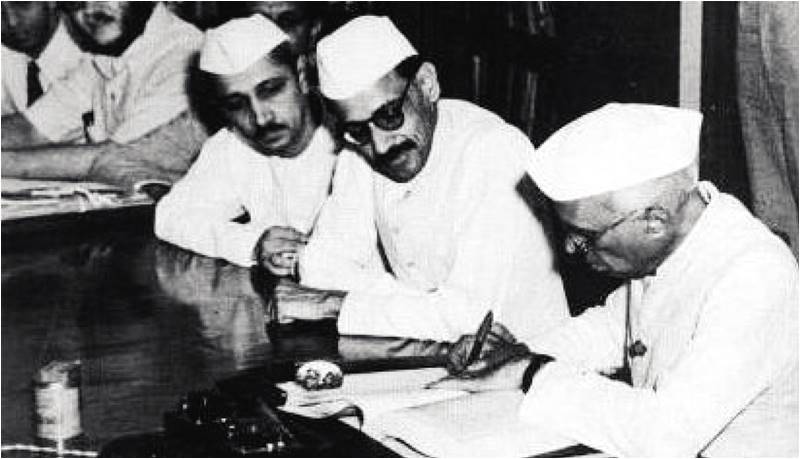
This photograph shows Jawaharlal Nehru signing the report of the Planning Commission on the First Five Year Plan, New Delhi on July 7, 1951.
Nehru envisioned a socialist India with the ‘elimination of profit in society…With social service and cooperation taking place of competition.’ Nehru replicated the Soviet planning commission and its Five Year Plans while severely restricting the scope of private enterprise. In the 1955 Avadi session of the Congress, Nehru pushed through a resolution for creating an economy on ‘a socialist pattern.’ He stopped short of forceful redistribution because he felt there was just too little money, and perhaps tempered by the relative failure of the land reform and Bhoodan movements.
On December 8, 1951, Nehru presented the first five-year plan to the Parliament of India. This was based on the Harrod-Domar model. At that time, India was facing three problems – the influx of refugees, a severe shortage of food and also mounting inflation.
India had to recover from the partition and the disequilibrium in the economy due to the Second World War. The First Plan, therefore, had the objectives of rehabilitating refugees, agricultural development, and self-sufficiency in food along with controlling inflation.
Nehru envisioned a socialist India with the ‘elimination of profit in society…With social service and cooperation taking place of competition.’ Nehru replicated the Soviet planning commission and its Five Year Plans while severely restricting the scope of private enterprise. In the 1955 Avadi session of the Congress, Nehru pushed through a resolution for creating an economy on ‘a socialist pattern.’ He stopped short of forceful redistribution because he felt there was just too little money, and perhaps tempered by the relative failure of the land reform and Bhoodan movements.
On December 8, 1951, Nehru presented the first five-year plan to the Parliament of India. This was based on the Harrod-Domar model. At that time, India was facing three problems – the influx of refugees, a severe shortage of food and also mounting inflation.
India had to recover from the partition and the disequilibrium in the economy due to the Second World War. The First Plan, therefore, had the objectives of rehabilitating refugees, agricultural development, and self-sufficiency in food along with controlling inflation.

